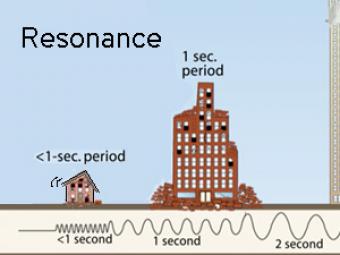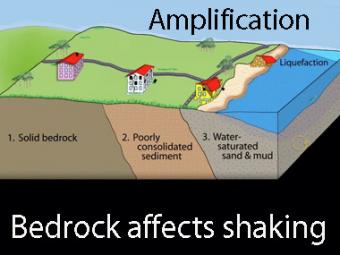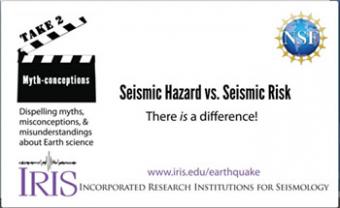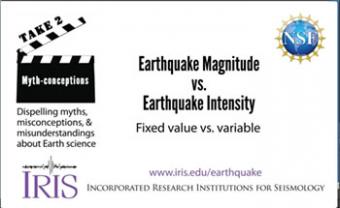How do buildings impact the shaking you feel?
If you are in a building during an earthquake, the way the building is constructed and your position in the building can have an impact on the shaking you feel. This means you may experience an earthquake differently from someone only a few buildings away.
Why is it important to learn about how human-made structures fare during an earthquake? More than 143 million people are exposed to potential earthquake hazards in the U.S. that could cost thousands of lives and billions of dollars in damage.

All buildings have a natural period, or resonance, which is the number of seconds it takes for the building to naturally vibrate back and forth. The ground also has a specific resonant frequency. Hard bedrock has higher frequencies softer sediments. If the period of ground motion matches the natural resonance of a building, it will undergo the largest oscillations possible and suffer the greatest damage.

Highly generalized animation reflects the arrivals of P, S, and surface waves to 3 closely spaced buildings. Exaggerated movement of the buildings reflects the relative motion recorded by the seismograms.

A seismic hazard is the probability that earthquake shaking of a certain intensity will occur in a given geographic area, within a given window of time. From that, risks can be assessed and included in mitigation efforts. Let's compare them.

Magnitude and intensity are both related to the size of an earthquake, but they each measure different aspects. One is measured using seismometers; the others is felt. Let's use a lightbulb as an analogy.

Build a Better wall is an activity developed by FEMA for their "Seismic Sleuths" instructional booklet for students to help with earthquake mitigation. This activity helps students learn how diagonal braces, shear walls, and rigid connections strengthen a structure to carry forces resulting from earthquake shaking.

What can you do to protect a building from earthquake shaking? This “Build a Better Wall” classroom activity is designed to allow students to experiment with methods to build shear strength into buildings to withstand an earthquake. Uses simple materials to engineer shear walls.